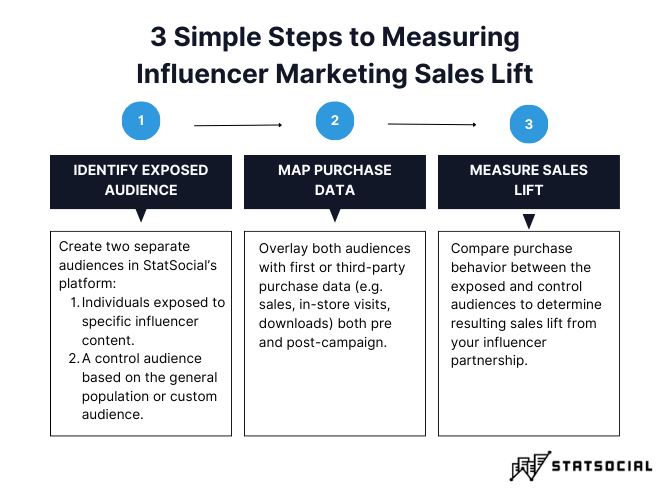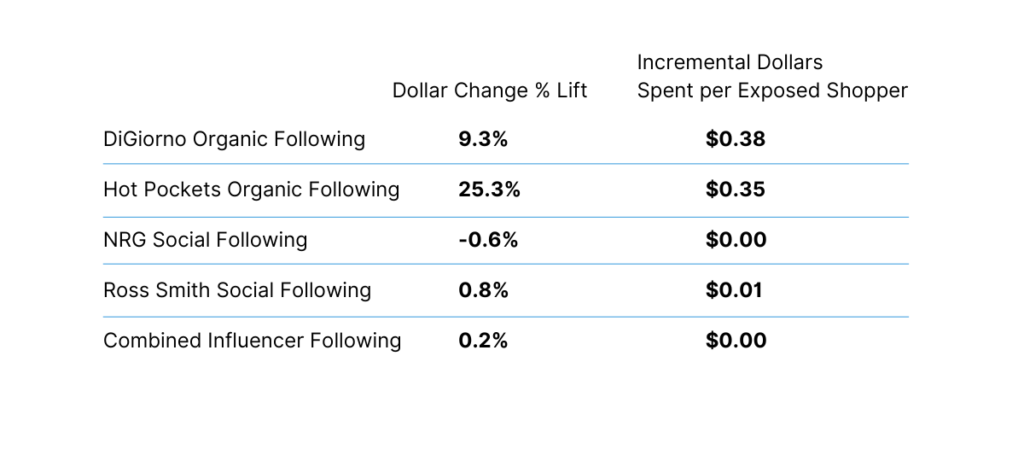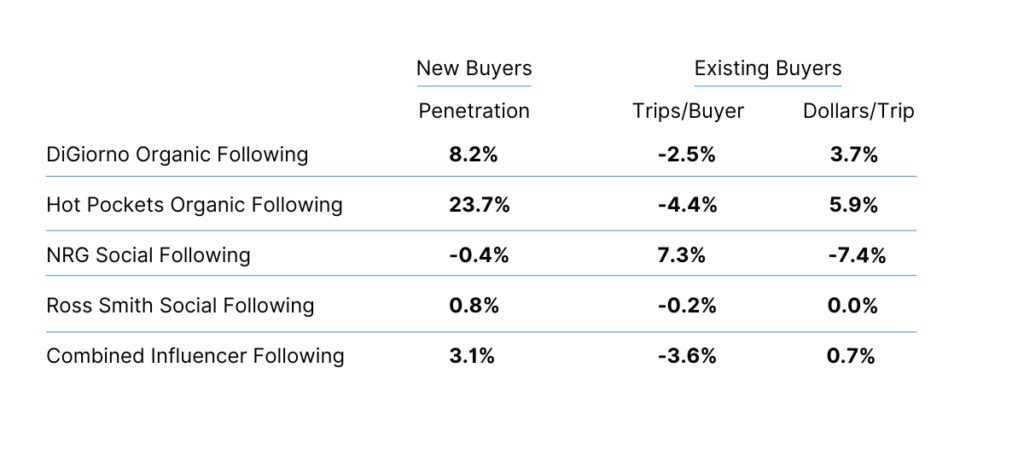Influencer marketing has become a cornerstone for many brands, with 69% of consumers saying they trust influencer recommendations. Yet, marketers who have measured digital and paid media programs for years are often left in the dark when it comes to quantifying the impact of their influencer campaigns. In fact, 53% of marketers listed determining ROI as their top challenge, and here is our take on why:
- The path to purchase isn’t always linear. While a content creator can include an affiliate link or promo code, it doesn’t mean their follower is ready to buy immediately after seeing an influencer’s content.
- Promo codes can be widely shared. You can’t pinpoint whether a sale resulted from the influencer’s campaign or from a promo code sharing site or browser extension.
- Engagement metrics can’t measure sales. Engagement or vanity metrics are great indicators of good content and interest, but don’t always translate to sales, and certainly don’t capture true sales impact.
Whether you have formally partnered with an influencer, or an influencer organically mentioned your brand, you want to know the effect on sales or other desired purchase behavior. You may have already faced that dreaded post-campaign debrief where your results feel like an educated guess—relying on an uptick in sales and high social engagement as signs of success. Meanwhile, Susan confidently reports exact purchase numbers tied to her last three paid media campaigns. Needless to say, for influencer and social marketers, engagement metrics alone make it challenging to measure real impact, leaving results up to interpretation rather than concrete data.
But there’s a way to put an end to that. In this blog, we’ll explore:
The ability to measure influencer campaigns the same way as paid
The data and steps needed to accurately measure influencer marketing ROI
How Nestlé was able to measure 25% sales lift using StatSocial’s influencer marketing ROI capabilities
The ability to measure influencer campaigns the same way as paid
With most paid media campaigns, you can identify which individuals interacted with your ad and made a resulting purchase. So why should influencer marketing be any different? Because we haven’t been able to map the individuals exposed to an influencer’s campaign back to sales–until now.
Thanks to audience intelligence technologies like StatSocial’s insights platform, it is now possible to identify the individuals that were exposed to your influencer or organic social campaign and made a resulting purchase.
The data and steps needed to accurately measure influencer marketing ROI
Measuring influencer marketing ROI might seem like an impossible task, but it’s rather simple. With the right platform, data, and steps, it’s easy to understand impact for more strategic, data-driven decisions.
Influencer campaign measurement needs 2 critical ingredients:
- Organically exposed social audience data
- First or third-party purchase data
With access to social audience data from a platform like StatSocial’s, you have the ability to identify the individuals organically exposed to your influencer campaign and social content.
Here’s how influencer marketing ROI can be achieved using our platform:

If this seems too good to be true, it’s not. We recently partnered with Nestlé to conduct their own influencer marketing ROI study, with results that both surprised and paved the way for a different strategy. In the next section, discover how Nestlé measured sales lift and the results of their campaign.
How Nestlé was able to measure 25% sales lift using StatSocial’s influencer marketing ROI capabilities
For a company like Nestlé, influencer marketing is essential. But after making significant investments in this strategy, it became crucial to achieve more precise results to optimize future efforts effectively. To move beyond traditional engagement metrics, they partnered with StatSocial to finally link exposed audiences to purchase data for the first time.
Nestlé’s influencer partners and campaign strategy
Nestlé launched an influencer and social campaign to boost sales of their frozen food brands, DiGiorno and Hot Pockets, partnering with big names and influencers like:
- NRG Sports
- IamDices
- Vincent Marcus
- Ross Smith
In parallel, they ran campaigns across their owned social accounts for both brands.
Steps Nestlé took to measure sales lift using StatSocial
Leveraging StatSocial’s influencer marketing ROI capabilities, Nestlé took the following steps to measure sales lift across their campaign:
Step 1: In the StatSocial platform, Nestlé created audiences of individuals organically exposed to influencer and owned content across major platforms like Instagram, X, TikTok, and YouTube.
Step 2: Nestlé’s analytics team, with their purchase data provider, matched the exposed audience to point-of-sale data over 150 days. They created a control group of non-exposed users with similar demographics and buying behaviors.
Step 3: By comparing purchase behavior across exposed and unexposed groups before, during, and after the campaign, Nestlé measured the associated impact.
Nestlé’s findings
When comparing the exposed group to the non-exposed, Nestlé found that audiences following their own DiGiorno and Hot Pockets social accounts spent 9.3% ($0.38) and 25.3% ($0.35) more, respectively. Interestingly, influencer partners’ audiences showed minimal impact, with leader Ross Smith demonstrating just a 0.8% lift.


These findings led to two major insights:
- Targeting Adjustments: The influencers reached younger audiences (the ‘consumers’) rather than household purchasers (parents or caregivers). Nestlé determined future campaigns should target household shoppers more directly.
- Value of Owned Channels: Nestlé realized their own social channels had a significant impact on sales, prompting them to amplify their owned accounts in future campaigns.
Had they not identified those organically exposed with StatSocial, Nestlé may have misattributed social engagement to sales, leading to less informed decisions on future partnerships.
This milestone allowed Nestlé to attribute real value to their influencer programs—aligning with measurement standards long established in other areas of marketing.
Daniel Davidson, the Head of CX Marketing Analytics at Nestlé even had this to say:
“Regardless of the results, the biggest takeaway from partnering with StatSocial was the ability to finally measure the direct sales impact resulting from our campaign–a capability that other marketing channels have been able to do for years.”
The importance of accurate influencer marketing ROI
Understanding influencer marketing ROI is critical for helping brands measure the true impact of their campaigns by connecting influencer exposure to actual sales and key performance metrics. Using social audience data, purchase data, and brand lift surveys, companies can assess how both paid and organic influencer campaigns contribute to ROI, in-store traffic, and brand perception, just like paid media. This holistic view of campaign performance enables brands to make data-driven decisions and optimize their influencer strategies for better results.
Learn more about StatSocial’s influencer marketing ROI solution or schedule an introductory call with a member of our team to get started.